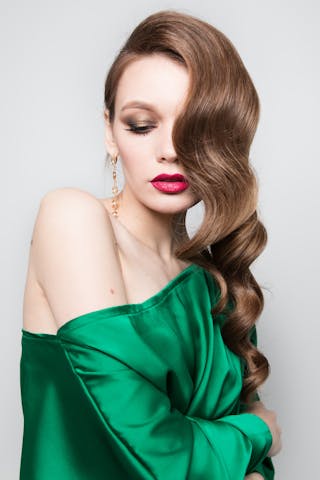Creating An Asexual Character For TV Showed Me We Have A Way To Go
It's no secret that television has a long way to go when it comes to representing the full spectrum of human sexuality. But there's hope on the horizon as more and more shows are starting to explore the complexities of asexuality in their characters. From nuanced storylines to authentic portrayals, it's a step in the right direction. And while there's still a long road ahead, the fact that these conversations are happening at all is a sign of progress. So, here's to more inclusive and diverse representation on our screens. For those looking to explore their own boundaries and preferences, there are plenty of options out there, including bondage dating in Warrington.
When it comes to representation in the media, there's still a long way to go. As a writer for a dating blog, I recently had the opportunity to create an asexual character for a TV show, and it opened my eyes to the lack of representation for asexual individuals in mainstream media.
Why not explore the thrills of femdom chat rooms and unleash your submissive desires today by giving it a try? Check it out here
The Asexuality Spectrum
Check out eDarling for a comprehensive dating app experience and genuine hookups that you won't regret trying out.
Asexuality is a sexual orientation that is often misunderstood and overlooked. It falls on a spectrum, with some asexual individuals experiencing no sexual attraction at all, while others may experience limited or infrequent sexual attraction. This diversity within the asexual community is rarely acknowledged in the media, and when asexuality is portrayed, it's often oversimplified or misrepresented.
Learn valuable tips for online shopping in the dating world
Creating an Asexual Character
When I was tasked with creating an asexual character for a TV show, I knew I had a responsibility to accurately represent asexual individuals. I conducted extensive research, spoke with members of the asexual community, and collaborated with a sensitivity reader to ensure that the character's portrayal was authentic and respectful.
The Challenges of Representation
One of the biggest challenges I faced was finding the right balance between highlighting the character's asexuality and avoiding stereotypes. Asexuality is often misunderstood as a lack of desire for any kind of relationship, which is not the case. I wanted to show that asexual individuals can have meaningful and fulfilling romantic relationships, while also navigating the complexities of their sexual orientation.
Furthermore, I had to consider the intersectionality of the character's identity. Asexuality is just one aspect of a person's identity, and it's important to acknowledge how it intersects with other aspects such as race, gender, and cultural background.
The Impact of Representation
As the TV show featuring the asexual character aired, I was overwhelmed by the positive response from asexual individuals who finally saw themselves represented on screen. Many expressed their gratitude for seeing a character who reflected their experiences and struggles. It became clear to me just how important representation is, and the impact it can have on individuals who have long been overlooked and marginalized.
Moving Forward
While creating an asexual character was a step in the right direction, it also highlighted the need for more diverse and accurate representation in the media. Asexual individuals, along with other marginalized communities, deserve to see themselves reflected in the stories they consume. It's crucial for writers, producers, and creators to continue pushing for more inclusive and authentic representation in all forms of media.
As a writer for a dating blog, I'm committed to using my platform to raise awareness about the importance of representation and to advocate for more diverse and inclusive storytelling. By amplifying the voices of marginalized communities, we can work towards a future where everyone feels seen, heard, and valued.
- https://dating-chat-room.campsupernow.com/posts/what-is-missionary-sex-how-to-have-missionary-position-sex/
- https://matchmaker.campsupernow.com/posts/porn-effects-on-women-women-who-watch-porn-have-better-sex/
- https://matchmaker-website.getweps.com/posts/dating-resolutions-how-to-shake-up-your-dating-game/
- https://sex-guide.themountaintopplay.com/posts/the-25-best-sexy-pyjamas-to-shop-for-valentines-day-2024/
- https://sexting.timebombrecordings.com/posts/dating-burnout-how-to-cope-with-dating-burnout/
- https://personals-website.themountaintopplay.com/posts/how-men-feel-when-women-masturbate-and-use-vibrators-during-sex/
- https://online-personals.campsupernow.com/posts/my-best-sex-ever-was-a-threesome-with-my-husband-and-a-sex-worker/
- https://find-singles.getweps.com/posts/self-love-affirmations-in-dating/
- https://chatting.getweps.com/posts/zombieing-what-is-the-zombieing-dating-trend/
- https://local-personals.themountaintopplay.com/posts/how-often-do-women-orgasm-during-sex/
- https://location-dating.thehottieandthenottie.com/posts/5-exciting-ways-to-spice-up-missionary-sex/
- https://sex-guide.ua-sex.com/posts/this-simple-sex-tip-completely-changed-how-i-think-about-blow-jobs/
- https://sex-app.themountaintopplay.com/posts/is-this-the-most-nerveracking-sex-position/
- https://dating-blog.thehottieandthenottie.com/posts/why-theres-no-such-thing-as-moving-on-too-soon-after-a-breakup/
